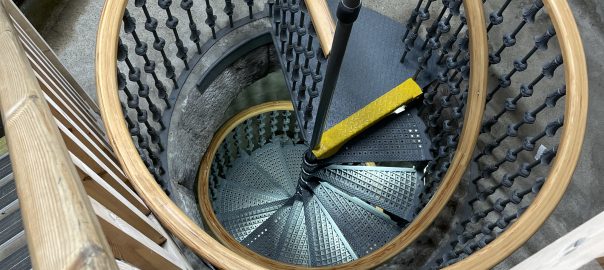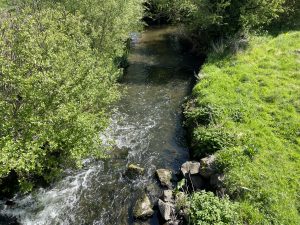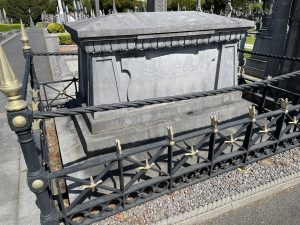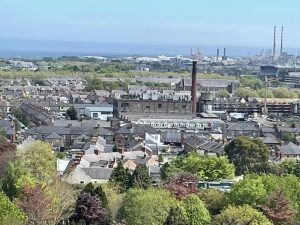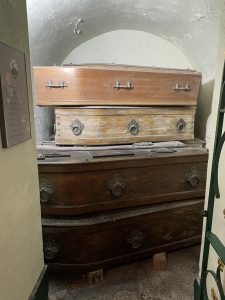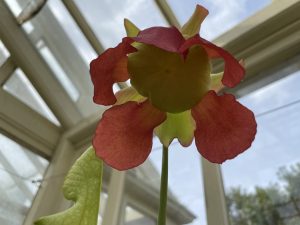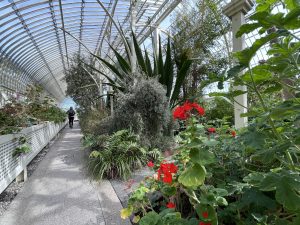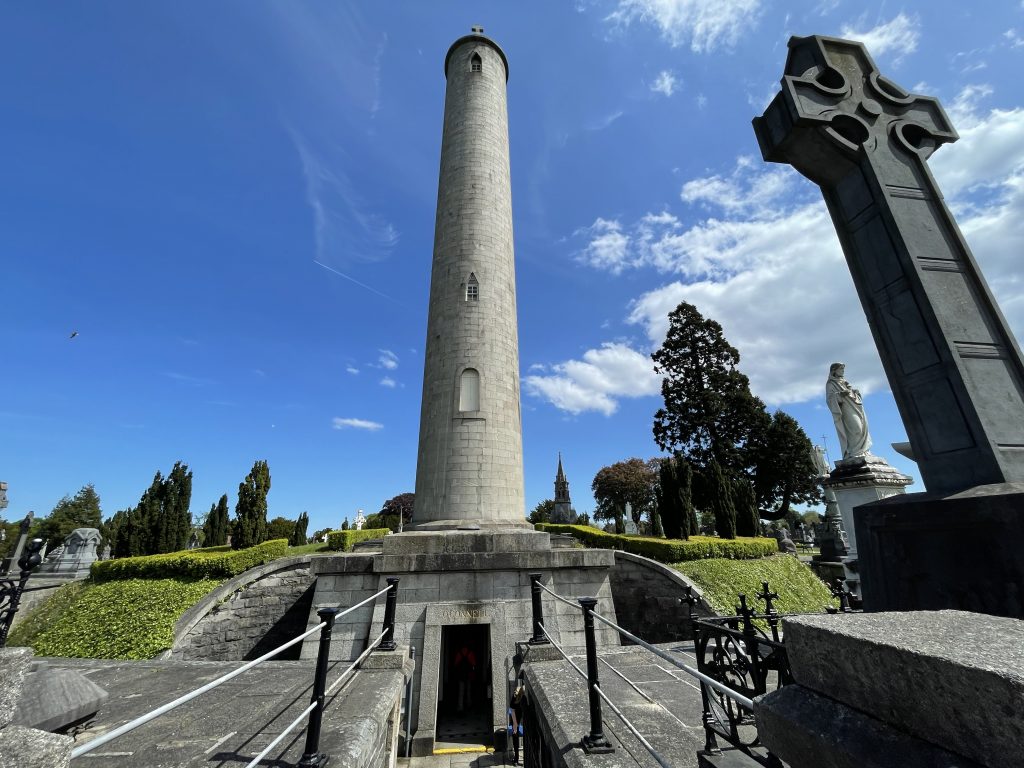Ireland day 0222. Sunday 08 May 2022- O’Connell
| Today’s summary | We took the train and Luas to Heuston then walked through Phoenix Park to Ashtown to meet the Dublin Walking Club for a short amble down the Tolka valley to Glasnevin cemetery then on to the Botanic gardens. Went up the O’Connell Tower and admired the views. An excellent day. | ||||
| Today’s weather | Dry, sunny and warm all day. Light southerly breeze. About 18C | ||||
 |
 |
||||
| Today’s overview location (The blue mark shows the location of our route) |
Close-up location (The green line shows where we walked) (Click button below to download GPX of today’s walk as recorded, or see interactive map at bottom with elevations corrected): Tolka Glasnevin Botanics and O'Connell |
||||
Commentary
Daniel O’Connell is a name that will be well known to anyone with an interest in Irish history – and indeed will probably be familiar to anyone who has ever walked down Dublin’s main shopping street.
He was a prominent campaigner for Catholic emancipation – since William of Orange’s victory in the Battle of the Boyne in 1690, the Catholic majority had been suppressed in Ireland and the Act of Union in 1801 entrenched this further. O’Connell in fact was elected as an MP for Clare and Dublin City but prevented from taking his seat in the post-Union house of commons in London, because he was a Catholic.
O’Connell helped secure Catholic emancipation in 1829 but never succeeded in his ultimate goal of repealing the Act of Union. But his achievements have been widely celebrated and following the Irish War of Independence, and the subsequent Civil War, Dublin’s main north-south street – at the time known as Sackville Street – was in 1924 re-named after him, in his honour.
When he died in 1847, he was buried in Glasnevin Cemetery – an appropriate location since in the early 19th century, there was nowhere in Dublin where Catholics could hold a full Catholic funeral and burial. O’Connell led the campaign for the situation to change, which eventually led to the opening of Glasnevin in 1832 and in recognition of his efforts, a huge stone tower – which you can climb up inside – has been erected on the top of his mausoleum right by the main entrance.
I had visited the cemetery on my own a couple of months ago, and decided to hold off going up the tower until Val could join me. So when the schedule of the Dublin Walking Club indicated that a walk from Ashtown to the Botanics via the Tolka Valley and Glasnevin was on the cards today, we jumped at the chance to go along. I thought today that we might be able to climb the tower, which certainly seemed like a good idea as it was brilliantly clear and the views were excellent.
Getting to the start of the walk at Ashtown station is a bit of a faff on a Sunday morning. The way the trains work out, you either set off early and have a massive wait at Connolly, or you set off at the last minute and rely on making a tight connection which would get us there – all being well – a minute after the advertised start time. In the end we compromised and did neither. We got the early train from Malahide, but rather than waiting around in Connolly station (which is always cold and draughty, no matter what the weather is actually like), we hopped on a convenient Luas and went round to Heuston. From there we had an absolutely stunning walk up through the emerald Phoenix Park, to Ashtown. Infinitely better than hanging around at the station.
Once we all met up, we discovered that the walk leader had cried off at the last minute as they had just come down with Covid. Nobody knew exactly where to go, but fortunately I had recorded a walk through part of the Tolka Valley park to Glasnevin on an earlier DWC outing. So I retrieved it on my GPS and we followed that for the first park of the walk. From the end of the Tolka Valley Park I managed to find an easy route to Glasnevin and from there someone else knew the way to the Botanics.
Once at the cemetery, one of the other walkers in our group managed to negotiate a student discount on the admission price (quite a remarkable achievement since none of us looked anywhere near student age) provided all of us went up the tower. So we signed up, and trooped up the 198 steps to the top. It was definitely worth making the ascent, as the views from the top really were impressive. But slightly alarming to see the substantial cracks in the walls, created by the 1971 bombing. You can read more about that in the pictures below. We were assured it was quite safe, despite the damage.
After a brief pause for refreshments near the cemetery café, we found the exit from the back of the graveyard into the Botanic Gardens, and finished the walk with a quick look round some of the greenhouses. After the group had disbanded and we had gone our separate ways, Val and I found a sunny spot to finish off our sandwiches sitting on the grass. I am embarrassed to admit that at this point I lay down briefly to enjoy the warm sunshine (at last!) and am told I fell asleep. Oh well, it had been a long day.
From there, a quick ride on the 155 took us back to Tara St station, from where we caught a conveniently timed DART, and seemed to be back in the flat in no time. Now we’re relaxing after a quick delicious dinner of fusili e pancetta and basking in the afterglow of the sunshine (or perhaps just of the chilli we added to the pasta). A lovely day out.
Today’s photos (click to enlarge)
(Elevations corrected at GPS Visualizer: Assign DEM elevation data to coordinates )
Max elevation: 43 m
Min elevation: 19 m
Total climbing: 127 m
Total descent: -144 m
Total time: 03:35:36
